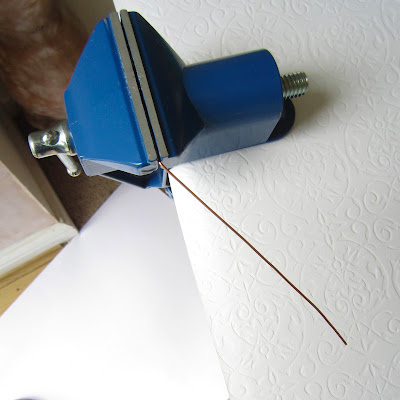Or maybe I should say "make" what you love. I think every artist at
sometime or another gets burned out and suddenly "going to work" really
does become going to work and creating loses a lot of its bliss. And I
don't mean just for that one day or week… I mean when you don't want to
make anything. At all.
It can happen for nearly any reason and at any time.
Yep, that was me a couple months back.
If it hasn't happened to you yet, fabulous! But don't freak out too much if and when it does.
So
what did I do? Well, I did actually stop making beads for a while. And
then I went back to basics and I asked myself what did I love about
beadmaking? What was it that had made it so special in the past?
I've
never really been one to sketch out my ideas (mainly because I'm not
very skilled with a pencil! ;-), but I actually did do some sketching. And I
also started long list of all the things that inspire me and all the ideas I've had in the past, but had never taken the time to try. And then I started crossing things off that list.
And
even more importantly I did what was fun! I didn't take out that long list
of things that
needed to be made right now, instead I pulled out some
polymer and just made what I
felt like making. And I enjoyed it! Really
enjoyed it!
And here's what's happened so far:
For
me, my favorite thing has always been sculpting. And painting comes
second. There's something fascinating about transforming a bland, solid
color with just some layers of paint.
In my
last post
you saw the results of one of my "just for fun" ideas… I'd been wanting
to try that technique ever since I first started working with polymer
clay!
Now every week, I've scheduled out some time to
explore and try new things––to really enjoy creating! And to get back to
loving what I do… I'm getting there again!
Doing what we love, I think is really what makes us artists. It's what makes us unique from one another even though many of us work with the same medium or use the exact same techniques. We put a passion into our work that makes it truly our own.
Here's to happy creating and fewer burnouts!!
Have
you ever gotten burned out? How did you make your comeback? Or maybe
you're still working on finding your creative side again? And for those
of you who really feel the happiness, what is it that you totally love
to create?



























































